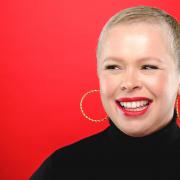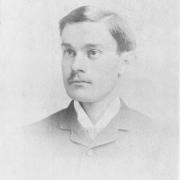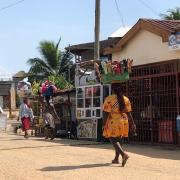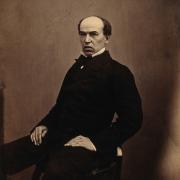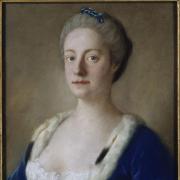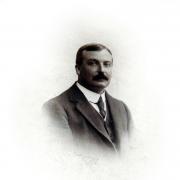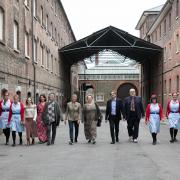From his home in Broadstairs, Royston Robertson comes up with satirical, topical and sometimes just plain silly cartoons | Words: Caroline Read - Pictures: Manu Palomeque and Royston Robertson

Meeting someone new, how do you describe what you do?
I tell them I’m a freelance cartoonist and then take it from there. There are usually follow-up questions as people do have lots of different ideas of what a cartoonist is.
The first thing most people assume is that I work in animation, drawing cartoons for children. But my cartoons are aimed at grown-ups and mostly appear in magazines. They definitely don’t move.
My cartoons have been published in Private Eye, The Spectator, Reader’s Digest and many other magazines.

I also draw for trade publications and produce cartoons for greetings cards, books, and all kinds of companies.
I am a co-organiser of the Herne Bay Cartoon Festival too, which began in 2013.
Were you always arty at school?
I was always into drawing cartoons. I drew comics at home, I drew for the school magazine, then later the university mag. But I didn’t progress beyond A-level art. I didn’t go to art school.

I don’t think I seriously thought of it as a career when I was younger; somehow drawing cartoons is something that you’re encouraged to think of as a hobby. Instead I trained and worked as a journalist.
So how did you get into this line of work?
I got started professionally simply by sending cartoons to magazines. This was in 1997. I soon got a few printed, then I put a portfolio website together and eventually I began to get commissioned work.
I gave up the day job in 2004, though I still do some journalism as a freelancer, and have managed to stick with it, getting cartoons published all over the world.

Do you have to be glued to the news?
Yes, you do have to watch the news to keep up with what’s happening. But the cartoons I do are not just about the actual events in the news, they’re very much about the latest trends, buzz phrases and so on.
So I’m very much the kind of person that makes notes after observing things or hearing things people say. I carry a notebook with me and often jot down ideas that come up in all kinds of situations.
Is it similar to a comedian writing jokes?
Yes, many of my cartoons are observational comedy really, or they’re surreal and silly. But either way they very much involve sitting down and working out the joke.

The joke is actually more important than the drawing with magazine cartoons. A good joke that has a rudimentary drawing is fine as long as it gets the joke across.
But a poor joke that’s brilliantly drawn is less likely to be published.
How does the process work?
I work on spec for magazines like Private Eye by sending in a batch of cartoons and hoping they’ll use some. All their cartoonists do that. It’s very competitive and the rejection rate is high, unfortunately.

But I am commissioned on specific subjects by various trade magazines that I work for regularly and by clients such as finance companies, publishers and so on.
I also draw live at business conferences, doing ‘visualisation’ drawings that summarise what people are talking about at the event.
That hasn’t happened lately because of the pandemic, although I have covered events that happened virtually on Zoom.
Are they hand drawn still?
I do most drawing on an iPad these days but it is still very much a freehand process. People often make the mistake of thinking that drawing digitally means they are somehow ‘computer generated’.

But the tablet and stylus are just tools, like anything else. Many people are surprised to find that I do work digitally as I take care to make sure they look like traditional inked cartoons and I don’t use lots of digital tricks and effects.
Your most memorable works?
The weird thing about cartoons is that it’s an art based on the approval of others, by which I mean the successful ones are the ones that make other people laugh.
So the most memorable ones inevitably are those that never seem to go away. I have quite a few that were drawn years ago but which keep popping up on social media and which I regularly sell as prints.

These include ‘The Dog’s Pollocks’, which is popular with dog owners and I’ve even redrawn on request with specific breeds, and ‘Pop Music’, which I always maintain will be etched on my gravestone.
Bizarrely, they were both in the same issue of Private Eye in 2014, so I guess that must represent some kind of a career high.
There must be a lot of material at the moment
There has certainly been no shortage of big news stories since 2016 with the Brexit vote. Trump and Boris Johnson are gifts for cartoonists.

And Covid, which we’d never heard of before January, has of course, dominated this year’s cartoons. Sometimes though the big news stories dominate too much and it can be hard to find an original angle, so I focus on the smaller stuff, cartoons about everyday life.
People, and the way we live life now, are always the biggest subject. Even when I do a cartoon that features cats and dogs talking it’s usually satirising us.
Is anything strictly off limits?
Obviously there are taboo subjects. I wouldn’t say I’ve never done cartoons that offend but I don’t set out to be deliberately offensive as that would be a one-way ticket to not getting published.

But this topic is kind of a minefield because what is deemed ‘off limits’ changes all the time and means different things to different people.
You live in Broadstairs. What do you love about the area?
I’m originally from Catterick, North Yorkshire, and have lived in Broadstairs since 2004. We moved here after living in London for 10 years.
I love the coast, obviously. I’m a member of Thanet Roadrunners and the coast around here is great for running.
Plus it’s easy to forget, as not much has been going on in this pandemic year, but Thanet has become a pretty happening place with things like Ramsgate Music Hall and the Turner Contemporary. It has definitely been on the up over the past 10 years or so.
I’m also a fan of Gadds’, the Ramsgate Brewery. They sponsor our ukulele group Gaddzukes, which has been running since 2013. Real ale and ukes, what’s not to like?
Probably my favourite local spot to visit is, rather helpfully, just opposite the end of my street: the Four Candles micropub – Britain’s smallest brewpub.
It features a large board explaining the brewing process in cartoon form, drawn by me, and last year I held a micro exhibition there.




